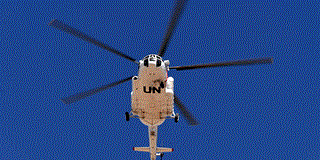International politics is replete with unresolved territorial disputes, from the South China Sea to South Ossetia. But one such dispute, over Western Sahara, is often overlooked, despite the very real possibility of resolving it.
MADRID – International politics is replete with unresolved territorial disputes, from conflicting claims by China and Japan over the Senkaku/Diaoyu Islands in the East China Sea to the prolonged disagreement between Armenia and Azerbaijan over Nagorno-Karabakh. But one such dispute, over Western Sahara, is often overlooked, despite the very real possibility of resolving it.
With a population of about 600,000 on territory covering roughly 102,700 square miles (266,000 square kilometers), Western Sahara, a Spanish colony until 1975, is the largest of 17 non-self-governing territories listed by the United Nations as having not reached final political status. The territory has been in limbo for much of the last four decades, with Morocco and the pro-independence Polisario Front both asserting claims to the territory. Morocco controls about 80%; the Polisario Front holds the remaining 20%, on the border with Algeria.
Last month, I visited Western Sahara’s Moroccan-controlled capital, Laayoune – a vibrant and gleaming city born from a dusty Spanish colonial outpost – to examine the sustainability of the operations of OCP Group, on whose international advisory board I serve. OCP Group is a leading phosphate producer, with access to approximately 70% of the world’s phosphate reserves. It operates in Western Sahara through its subsidiary Phosboucraa, which represents about 6% of OCP’s business turnover and approximately 1.6% of its phosphate reserves.

MADRID – International politics is replete with unresolved territorial disputes, from conflicting claims by China and Japan over the Senkaku/Diaoyu Islands in the East China Sea to the prolonged disagreement between Armenia and Azerbaijan over Nagorno-Karabakh. But one such dispute, over Western Sahara, is often overlooked, despite the very real possibility of resolving it.
With a population of about 600,000 on territory covering roughly 102,700 square miles (266,000 square kilometers), Western Sahara, a Spanish colony until 1975, is the largest of 17 non-self-governing territories listed by the United Nations as having not reached final political status. The territory has been in limbo for much of the last four decades, with Morocco and the pro-independence Polisario Front both asserting claims to the territory. Morocco controls about 80%; the Polisario Front holds the remaining 20%, on the border with Algeria.
Last month, I visited Western Sahara’s Moroccan-controlled capital, Laayoune – a vibrant and gleaming city born from a dusty Spanish colonial outpost – to examine the sustainability of the operations of OCP Group, on whose international advisory board I serve. OCP Group is a leading phosphate producer, with access to approximately 70% of the world’s phosphate reserves. It operates in Western Sahara through its subsidiary Phosboucraa, which represents about 6% of OCP’s business turnover and approximately 1.6% of its phosphate reserves.